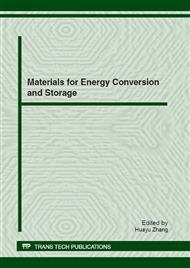p.87
p.92
p.96
p.100
p.104
p.108
p.113
p.118
p.124
Rolling Temperature on the SHS Reaction of Rolled Al/Ni Reactive Multilayer Foils
Abstract:
In this article, the Al/Ni reactive multilayer foils that can be used for joining materials in an efficient and energy-saving way were prepared by a hot rolling method, during which the Al/Ni multilayer foils were kept in furnace at a certain temperature for a period before the multilayer foils were rolled for each pass. After the cold rolling and hot rolling procedure at the temperature of 200 oC and 300 oC, no reaction between Al and Ni could be detected. The effect of rolling temperature on the self-propagating high temperature synthesis (SHS) reaction of the Al/Ni multilayer foils was investigated. As the rolling temperature rose to 300 oC, the SHS reaction of the Al/Ni multilayer was hard to be ignited and was even quenched before the SHS reaction completed. The XRD patterns and SEM images results demonstrated that the higher temperature increased the deformation of the samples during the rolling passes so the Ni particles increased, and thereby led to the decrease of the mix homogeneity of Al and Ni foils.
Info:
Periodical:
Pages:
104-107
Citation:
Online since:
July 2012
Authors:
Price:
Сopyright:
© 2012 Trans Tech Publications Ltd. All Rights Reserved
Share:
Citation:


